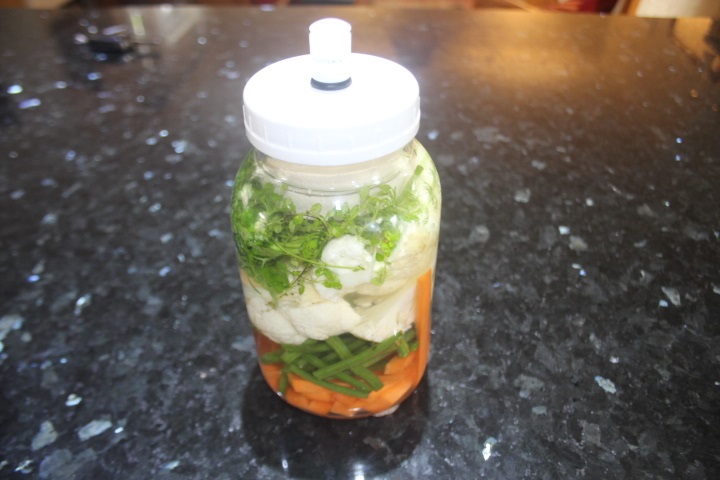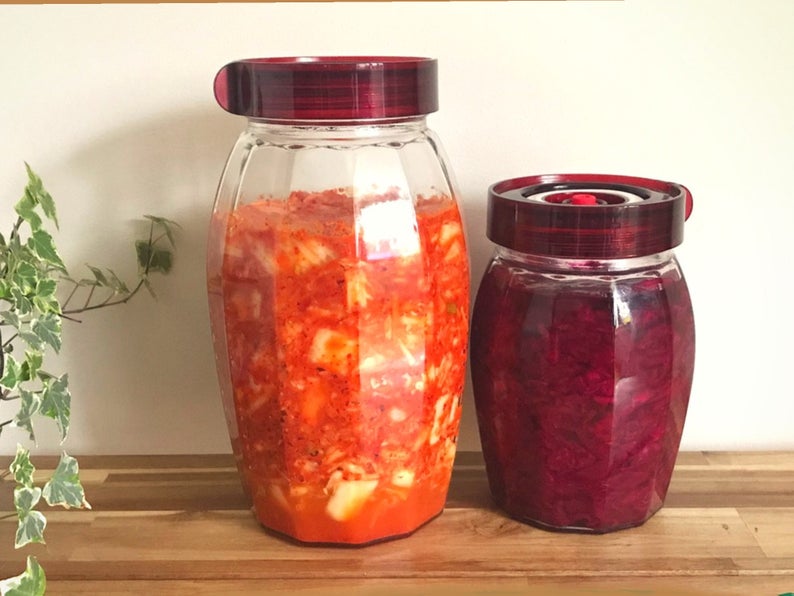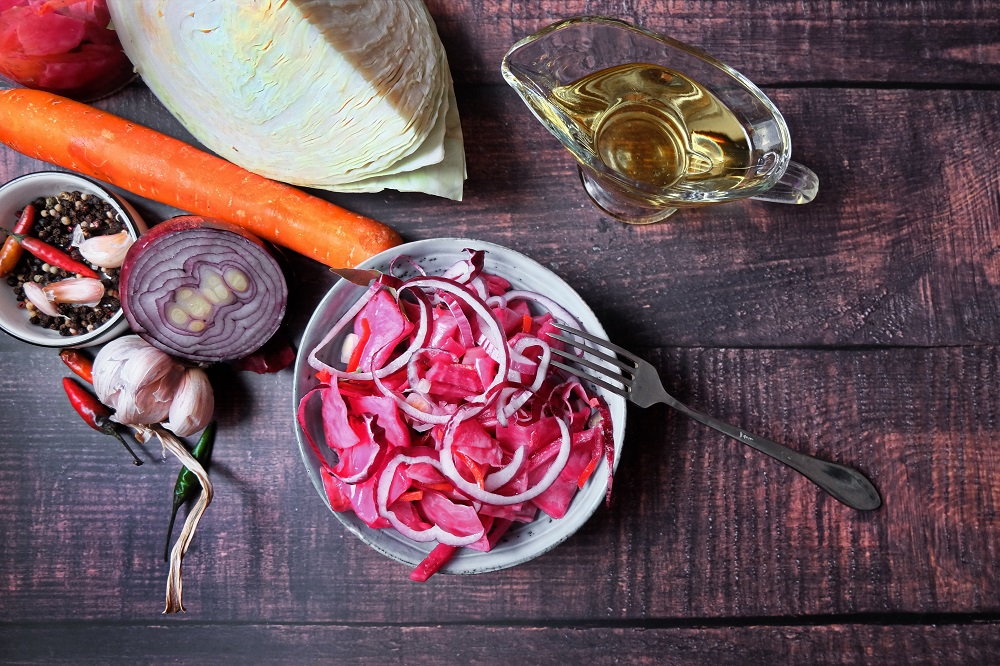If you like pickles, you’re going to love fermented vegetables – and not only are they really tasty, but they’re packed full of health benefits. All you need is salt, water and vegetables to provide you with a probiotic powerhouse of flavours perfect for the winter months.
What is fermentation
Naturally occurring bacteria on fruits and vegetables is called lactobacillus – and when they are placed in an oxygen free environment, this bacteria converts sugar into lactic acid, giving fermented foods their tangy/sour flavour?

Health benefits of fermented vegetables
There are many health benefits associated with fermentation and, would you believe, fermented vegetables are often more nutritious than they are when they’re raw.
The probiotics produced during fermentation can help restore the balance of friendly bacteria in your gut and have been known to help to alleviate digestive problems. There is also evidence that suggests that probiotics can reduce symptoms of irritable bowel syndrome and reduce bloating, wind and constipation.
Due to their high probiotic content, fermented foods can give your immune system a boost and reduce the risk of of infections and colds – they also tend to be rich in vitamin C, iron and zinc which also boost the immune system.
Studies have also suggested that increased consumption of fermented foods may help to reduce anxiety and depression, reduce belly fat and reduce the risk of heart disease.
How to ferment vegetables
Before you begin, it’s important to sterilise your fermentation jars. You could wash them in hot soapy water, and (where possible) put them through the dishwasher without any cleaning solution – but make sure you allow them to cool before use.
Alternatively, you could put them into the oven at 110°C (230°F), then leave them to cool before use.
What you’ll need:
- Sliced or chopped vegetables (anything will do, I used cauliflower, runner beans, carrots and fresh herbs. You can use any spices or herbs you like.
- 2 cups water
- 1 1/2 tablespoon coarse sea salt
- A quart wide mouth jar. I used a mason jar with an air vent lid.
- If you don’t have an air vent lid, use a plastic lid as regular metal lids will corrode from the acid if you are going to ferment on a regular basis.
- Any spices or herbs you like (peppercorns, dill, basil, bay leaf, etc.)
- 1 small cabbage leaf to weigh the vegetables if you don’t have a weight. I used a ceramic weight to weigh down my vegetables.

How to ferment
- Cut the vegetables into similar sized chunks, this will help them to ferment at the same time.
- Place the vegetables and any herbs and spices you’re using in the mason jar up to the bottom of the neck, there should be about 1 inch of space at the top.
- Stir the salt and water together until dissolved.
- Pour the salt water over the vegetables until it reaches just below the top of the jar. There should be about 1/2 inch of room left.
- Fold a small cabbage leaf and press it down on top of the vegetables so that it keeps the vegetables submerged in the salt water. If the vegetables are not submerged bacteria will spoil the batch.
- Close the lid on the jar tightly and place the jars out of direct sunlight in a relatively moderate temperature.
- You will start to see some bubbling after three days, if you don’t have an air vent lid gently loosen the lid allowing some of the gas escape once or twice a day.
The vegetables will be ready between days 4 and 10. The longer they sit, the more tangy they’ll be, so begin tasting them on day 4 to find out your preference. I personally prefer then after day 10.
Once you decide they’re the level of tanginess you’re looking for, place the the jar in the refrigerator where it will keep for several of months.
If the fermented vegetables have a foul smell when opened, the batch has failed so throw out and start again being careful to weigh the vegetables down.
Fermented vegetables are perfect for snacking on or adding to your meals for a probiotic boost. They are also delicious when added to salads.


When it comes to anything to do with gardens and wildlife, Dina is your woman. From growing your own veg to making your garden the perfect haven for UK wildlife, follow Dina’s top tips.